Learn how to make this Homemade Udon Noodles Recipe! These Japanese noodles taste best when made from scratch! You can use them in a variety of Japanese recipes or with your favorite Asian noodle dish!
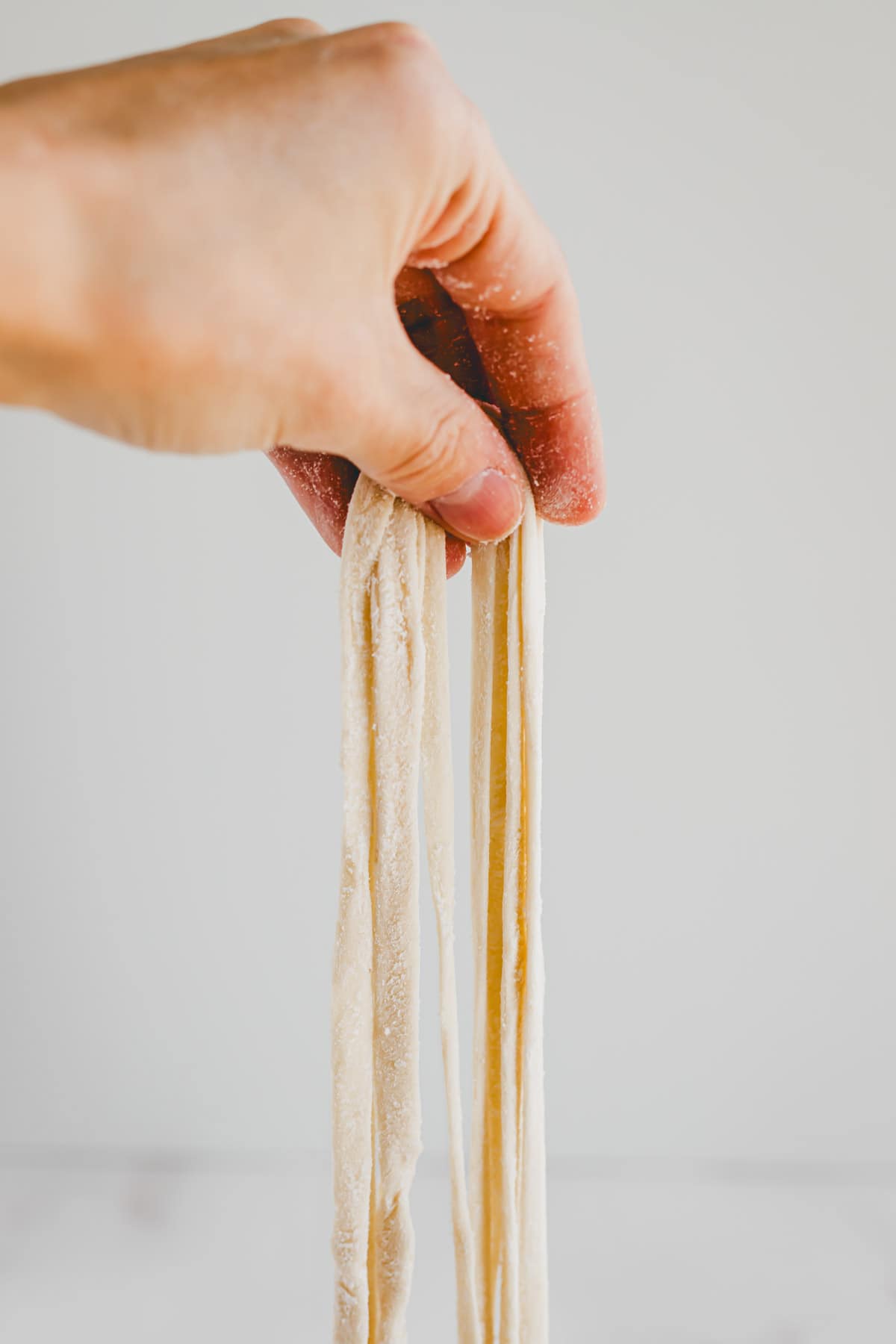
What Are Udon Noodles?
Udon noodles are a fundamental part of traditional Japanese cuisine. They’re known for their tender yet firm texture. These noodles are exceptionally thick and soft, setting them apart from other Japanese (or Asian) noodles! If you’ve never tried them, you’re in for a treat – they’re incredibly delicious! 🤤
Udon noodles are made from wheat flour, water, and salt. They can be used in Ramen (Japanese soups), stir-fry dishes with fresh vegetables, or even cold as salad.
Udon Recipes
Store-Bought vs. Homemade
You can get pre-cooked Udon noodles in any large grocery store, Asian shop, or even order them online. They just need to be briefly cooked in boiling water before serving. Some shops also sell dried Udon noodles, but I recommend staying away from those as they are very different from the original in terms of thickness, texture, and or flavor.
So, why make them yourself? The answer is simple: homemade udon noodles taste so much better!
email me this recipe 💌
There’s a clear difference in quality. Homemade noodles are soft and have a delightful flavor that store-bought just can’t match. Since the recipe is super easy and the noodles freeze well, it’s worth the effort! 😉
The recipe is quite straightforward, similar to making Italian noodles. To prevent the freshly made noodles from sticking, it’s important to generously dust your hands, work surface, and pasta roller with cornstarch.
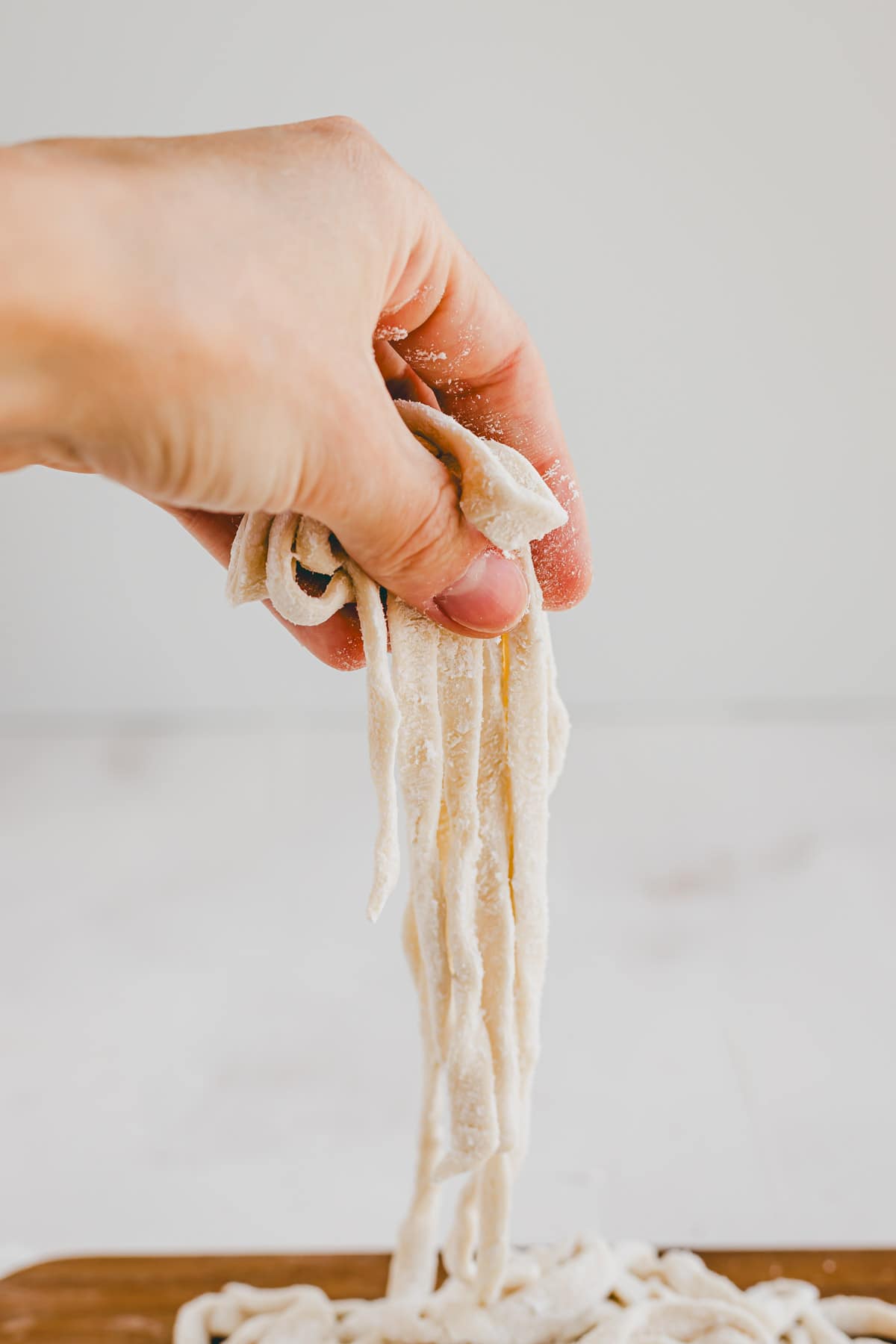
Ingredients
See recipe card for quantities. I highly recommend using a scale to weight your ingredients.
Visual Step-by-Step Instructions
See how to make udon noodles from scratch with this visual guide!
- Knead flour, salt, and warm water into a smooth dough, form it into a ball, and let it rest at room temperature for 1 hour.
- Roll out the dough with a pasta sheet roller or a noodle machine to ∼⅛ inch (3mm) thickness. Fold the dough like an accordion and cut into thick noodles using a sharp knife.
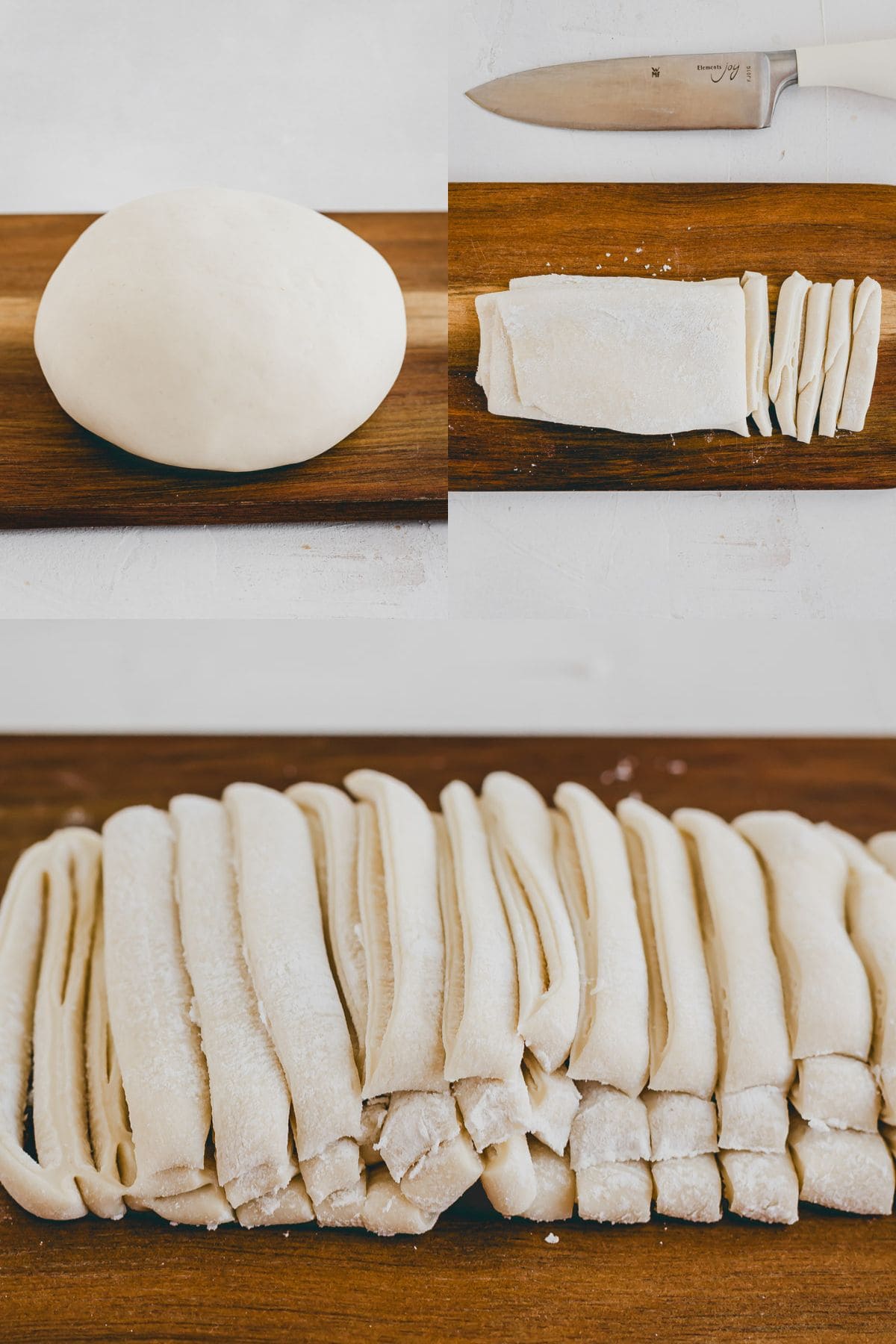
- Cook the noodles in a pot of water for 10 minutes. Drain in a colander and rinse with cold water.
- Use your homemade udon noodles for Yaki Udon, Udon Stir-Fry, Ramen, or any Japanese recipe of your choice.
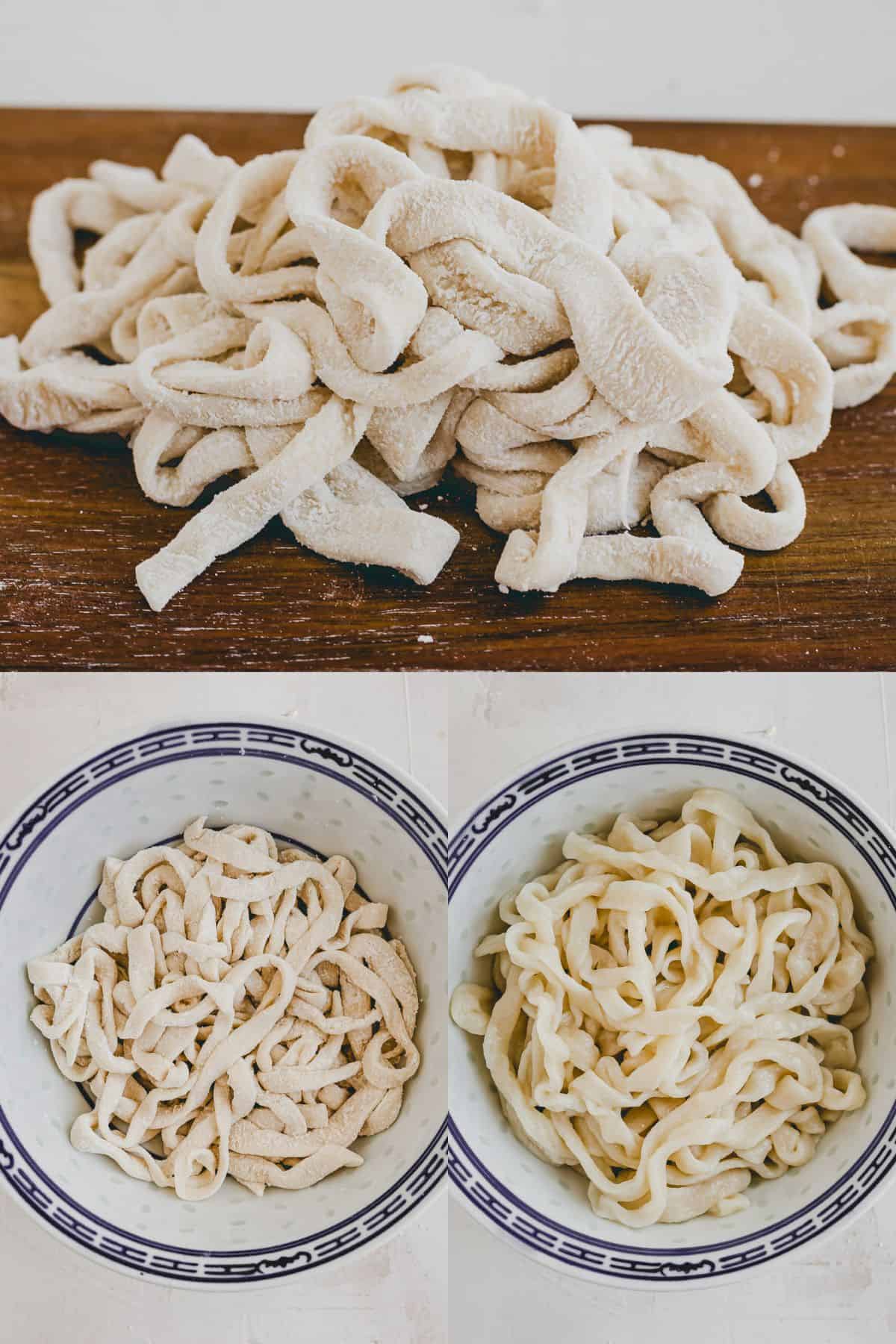
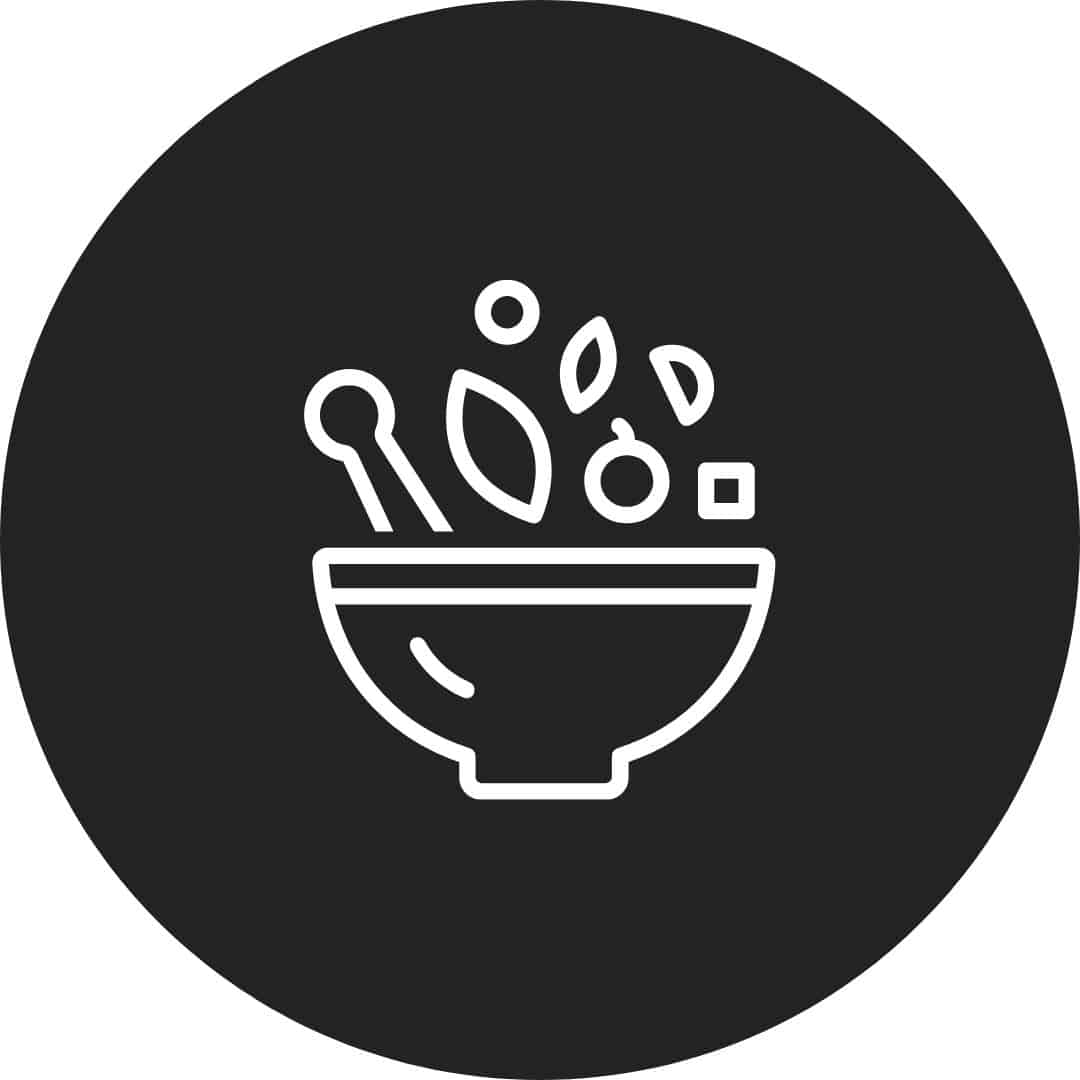
Preparation without a Pasta Roller: You can easily roll out the dough using a rolling pin. This just requires a bit more patience, time, and muscle as the dough isn’t as soft as you might be used from other dough! 😉
Storage Instructions
Stored in an airtight container in the fridge, the noodles stay fresh for 2 days.
To make them last longer, freeze the raw noodles without cooking in a freezer bag (preferably in portions). They will last in the freezer for 3 months. Cook the frozen noodles directly in boiling salt water for 12 minutes.
Did You Make This Recipe?
If you enjoyed this recipe, please consider leaving a ⭐ star rating and let me know how it went in the 📝 comments below.
Follow me on Instagram, Pinterest, or Facebook, and sign up for my free newsletter to stay updated with new recipes. Thank you for your support! ❤️✨
📖 Recipe
Homemade Udon Noodles
email me this recipe 💌
Ingredients
- 1 ½ cup all-purpose flour
- ⅜ cup + 1 tbsp lukewarm water
- 2 teaspoon salt
- 2 tablespoon cornstarch, or more
Instructions
- In the bowl of a stand mixer, dissolve the salt in lukewarm water. Add all-purpose flour and knead with the dough hook attached into a smooth dough.
- Shape the dough into a ball and wrap it in plastic wrap. Let it rest at room temperature for 1 hour.
- Divide the dough into two equal parts and roll each out into a rectangle using a rolling pin.
- Set up your pasta maker! Dust your pasta maker, work surface, and hands with flour. Roll the dough twice through the pasta maker with the widest setting.
- Click the pasta maker down a setting and roll the pasta dough through twice again. ➝ It should have a thickness of ~ ⅛ inch (3-4mm).
- No pasta maker? Roll out the dough using a rolling pin.
- Dust the dough with cornstarch and fold like an accordion. Cut the folded dough into thick noodles using a sharp knife.
- Repeat with the second half.
- Cook the noodles in boiling salt water for 10 minutes. Drain in a colander and rinse with cold water.
- Use your homemade udon noodles for Yaki Udon, Udon Stir-Fry, Ramen, or any Japanese recipe of your choice.
Notes
- Cornstarch: To prevent the freshly made noodles from sticking, it’s important to generously dust your hands, work surface, and pasta roller with cornstarch.
- Storage: The noodles stay fresh for 2 days if stored in an airtight container in the fridge.
- Freeze: To make them last longer, freeze the raw noodles without cooking in a freezer bag (preferably in portions). They will last in the freezer for 3 months. Cook the frozen noodles directly in boiling salt water for 12 minutes.
- Credit: The recipe is inspired by the Udon Noodles Recipe from the lovely Nami “Just One Cookbook”. Make sure to check out her blog, she shares amazing Asian recipes!

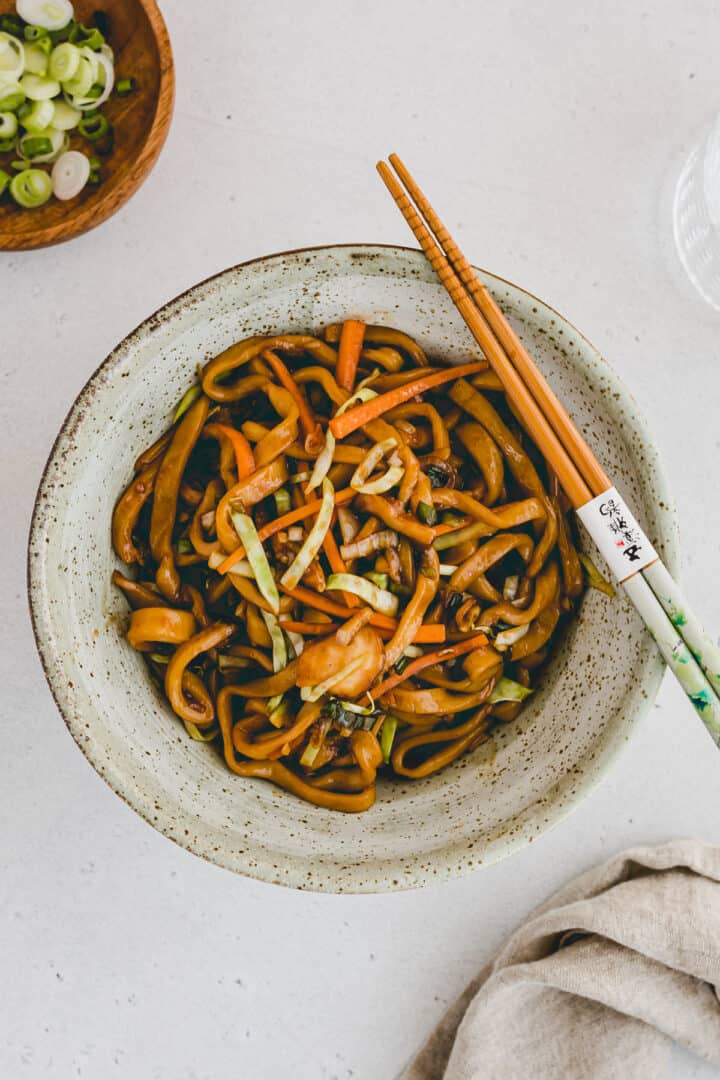
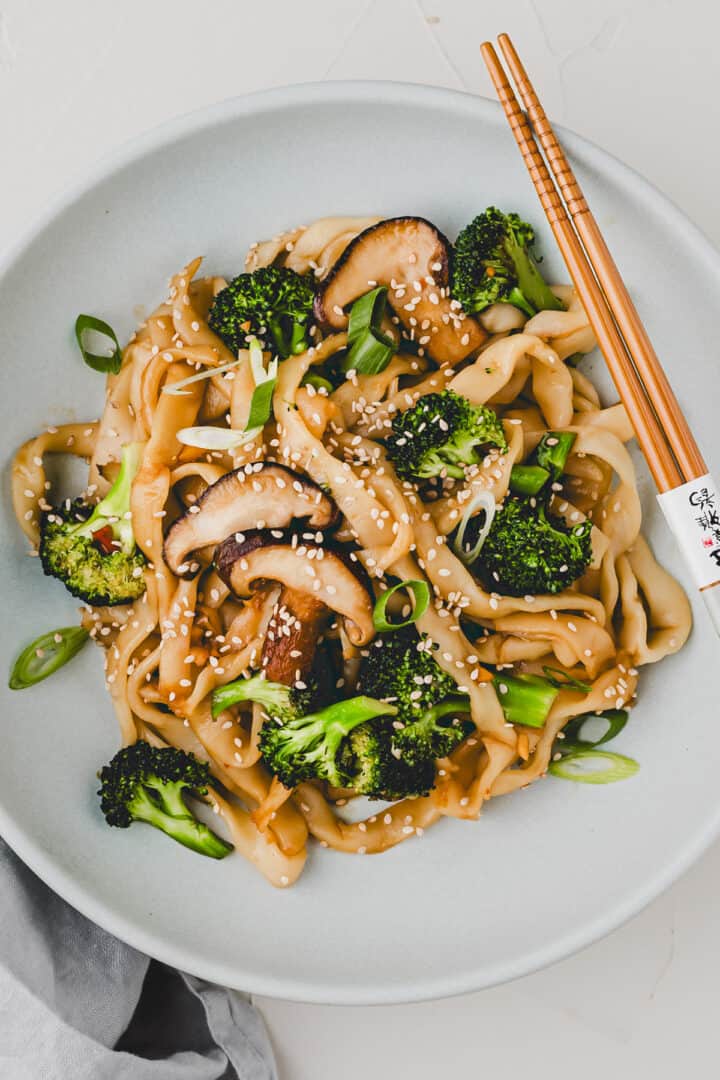
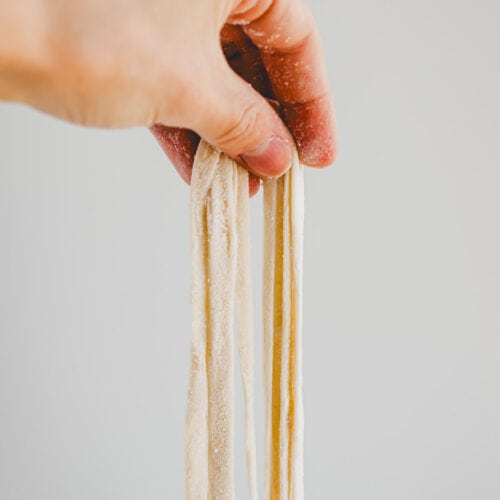
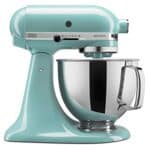
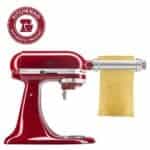
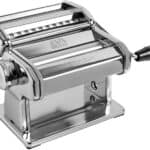
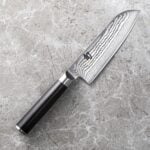
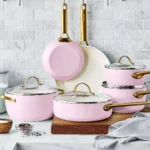
Good however next time I’m not using that much salt. A little bit to much for me.
This worked exactly as written, thanks!
Happy to hear, Susan! ❤️
Awesome!
💕💕💕
Awesome! Easy to follow!
Thank you for sharing!
Thank you for your kind comment!